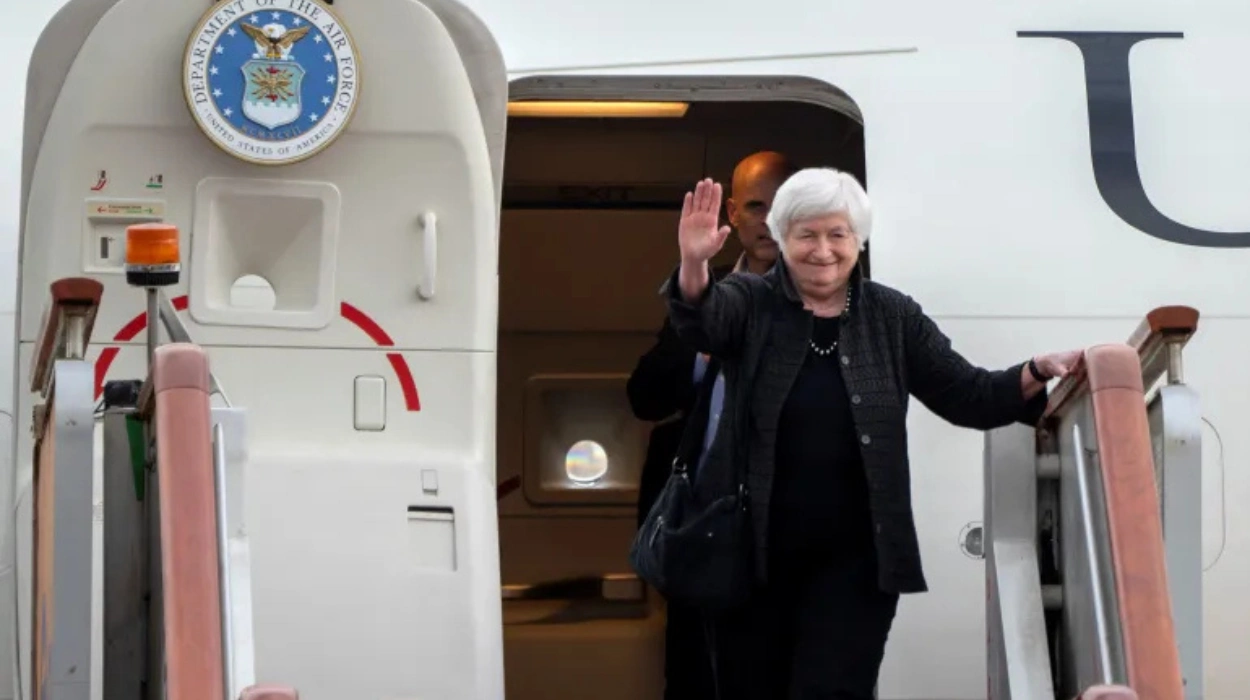US (Transatlantic Today) – US Treasury Secretary Janet Yellen arrived in Beijing for a four-day visit aimed at reducing tensions and fostering open communication between the US and China. Her arrival follows months of strained relations over trade, Taiwan, and the US’s stance against China’s growing influence in the Indo-Pacific. The Biden administration has expressed a desire to manage these tensions constructively rather than escalate them.
In a series of tweets upon arrival, Yellen emphasized the need for “healthy economic competition” and collaboration on global challenges. She also reiterated the US’s commitment to national security, highlighting the importance of direct communication to avoid misunderstandings. This trip follows Secretary of State Antony Blinken’s recent visit, part of the administration’s efforts to stabilize relations.
Yellen’s reception was modest, with a Chinese finance ministry official and US Ambassador Nicholas Burns welcoming her at the airport. Discussions are expected to cover critical issues, including Washington’s security-based trade restrictions, which have limited Chinese access to advanced technology. Beijing, on its part, remains concerned about US curbs on China’s tech access, perceiving them as a threat to its developmental goals in AI, telecoms, and more.
On Friday, Yellen will meet Premier Li Qiang and former economy chief Liu He, a close ally of President Xi Jinping. She intends to advocate for a fair competition framework while addressing the national security grounds of US trade restrictions. Anonymously, a senior Treasury official indicated that Yellen would also raise concerns about China’s export controls on metals vital for semiconductors and solar panels.
Yellen’s visit underscores the US stance that security measures are non-negotiable. With Xi Jinping accusing the US of hindering China’s progress, Yellen’s presence marks a bid to stabilize bilateral ties and establish clear communication channels, keeping competition healthy while maintaining essential security safeguards.


























